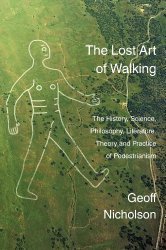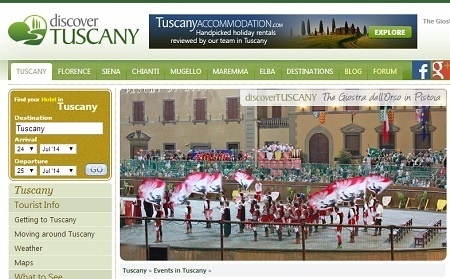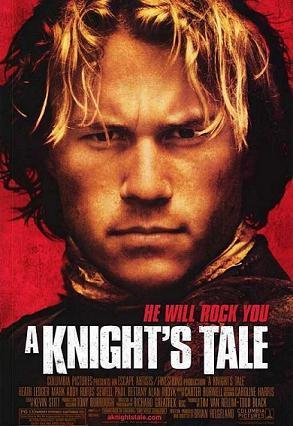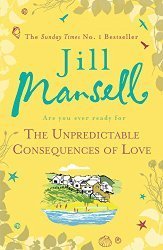Hannah Fielding's Blog, page 98
August 8, 2014
Walking for walking’s sake
Is the modern Western world of technology and ever-faster transport making us forget the joy of walking – just walking, for the joy of it? Should we all walk more, not just for our physical health, but to inspire and soothe mind and soul? It’s an idea increasingly explored. Take Geoff Nicholson’s new book, The Lost Art of Walking.
From the blurb:
Walking was once the only way to get around but now we just walk to the bus stop, station or car. Or we walk as a lifestyle choice – trekking holidays, charity walks, urban explorations. Geoff Nicholson’s The Lost Art of Walking brings pedestrianism back to the centre of life by musing on his own walks, reflecting on writers, artists, musicians and film makers who take walking as a subject, and by looking at some of the great walkers in history the competitive, the adventurous, the philosophical, the merely eccentric.
The book takes us far further than most would consider walking distance, from the Oxford Street of de Quincey’s London to the mean streets of Los
Angeles, from the concrete canyons of New York City to the seven hills of Sheffield, by way of the British seaside and the deserts of America, Egypt and Australia. Along the way it describes encounters with nude walkers, labyrinth walkers, psychogeographers, among many others. The Lost Art of Walking is discursive, imaginative, full of insight and sometimes downright hilarious.
I’ve bought the book, and read it… between walks! Because of course I love to walk, whether in the gardens of my homes in England and France, or across fields or along a beach, or, if I’m feeling in the mood for buzz, along the streets of a town. Walking, in fact, is an integral part of my writing routine – while I wander I wonder. I find new ideas, I untangle knots, I wash away blocks and I clear out the cobwebs ready to write some more.
Many writers have been proponents of the simple walk, or as it has been called, ‘the purposeless walk’. Henry David Thoreau wrote a book entitled Walking. Dickens was known for walking many miles at a time through cities; hence his vivid descriptions of Industrial Revolution England. Friedrich Nietzsche wrote: ‘All truly great thoughts are conceived while walking.’
Virginia Woolf, George Orwell, Thomas De Quincey, Vladimir Nabokov – all of these writers’ seminal works are owed in some part to the thinking and inspiration found in walking. And of course the most famous of all is William Wordsworth, whose 1807 poem ‘I Wandered Lonely as a Cloud’ perfectly encapsulates the magic of the walk:
I Wandered Lonely as a Cloud
I wandered lonely as a Cloud
That floats on high o’er Vales and Hills,
When all at once I saw a crowd
A host of dancing Daffodils;
Along the Lake, beneath the trees,
Ten thousand dancing in the breeze.
The waves beside them danced, but they
Outdid the sparkling waves in glee: –
A poet could not but be gay
In such a laughing company:
I gaz’d – and gaz’d – but little thought
What wealth the shew to me had brought:
For oft when on my couch I lie
In vacant or in pensive mood,
They flash upon that inward eye
Which is the bliss of solitude,
And then my heart with pleasure fills,
And dances with the Daffodils.
The author of The Lost Art of Walking told the BBC News Magazine:
There is something about the pace of walking and the pace of thinking that goes together. Walking requires a certain amount of attention but it leaves great parts of the time open to thinking. I do believe once you get the blood flowing through the brain it does start working more creatively. Your senses are sharpened. As a writer, I also use it as a form of problem solving. I’m far more likely to find a solution by going for a walk than sitting at my desk and ‘thinking’.
All sorts of books are available to guide you on your (inherently guideless) walking. These, I think, are the basics to embrace if you want your walk to energise, soothe and inspire; to feed the part of you crying out for sustenance:
Choose a walk that is not physically demanding. This is not about getting your heart racing; you don’t really want to notice the walking activity itself. Pumping arms and pounding feet are out!
Thing about what kind of setting will give you what you need. Picking your way through busy city streets? Exploring quite back street, shadowy and empty? Meandering alone through a deserted park at twilight? Following the sunrise along a clifftop?
Try not to plan a route. Follow your nose. I’ve found the most amazing little eateries and shops in citiesthis way.
Opt for silence. Mobile phone switched off. No music.
Think about whether you want company. For the most inspirational and healing walks, sometimes solitude is best.
Clear your mind, and try to be meditative – notice thoughts but don’t dwell on them. Be mindful of the setting.Allow your senses to run wild – how lovely the smell of wildflowers; how stirring the sound of waves crashing; how jarring the contrast of blue sky and green grass.
If I’ve really enjoyed a walk and found it inspirational, I try to bring something home with me to help me hold on to the feeling. For example, I may pick a pine cone from the ground in the woods, or find a beautiful shell at the beach. Then, I put my souvenir on my writing desk back at home, and whenever I look at it I’m transported to someplacewonderful that was once outside but now lives on inside.
August 6, 2014
The pace of writing, then and now
 I have bookshelves bursting with books at home – with old, well-thumbed titles whose authors are long-departed, and with smart, new books whose authors are busy writing more, more, more. I love both kinds of books, but as I sit at my writing desk, pondering a scene in my latest novel, I find myself thinking about the time I’m giving to that thinking and how quickly the ‘Hannah Fielding’ shelf beside my desk will fill with books.
I have bookshelves bursting with books at home – with old, well-thumbed titles whose authors are long-departed, and with smart, new books whose authors are busy writing more, more, more. I love both kinds of books, but as I sit at my writing desk, pondering a scene in my latest novel, I find myself thinking about the time I’m giving to that thinking and how quickly the ‘Hannah Fielding’ shelf beside my desk will fill with books.
Time spent on the craft
Writing was once a real art form, with many authors spending years on their books. They agonised over the choice of a word, the rhythm of a sentence, a single punctuation mark. Take the following quote (which, confusingly, is attributed to both Flaubert and Oscar Wilde):
I was working on the proof of one of my poems all the morning, and took out a comma. In the afternoon I put it back again.
Such care, and such time put into the work!
Today, authors write more quickly. Because we live in a fast-paced world, but also because the business of being a writer requires that you be timely and prolific – and both publishers and the market expect the next book quickly. How fans of George RR Martin’s A Song of Fire and Ice series struggled to wait a couple of years for the next instalment!
It takes me something like a year to write a book, including the planning, research, writing and revising the novel until I’m sure it’s the best it can be. I think a year is about right – much longer and you’re lost in the book, perhaps revising where you shouldn’t be, and you lose sight of the next book and the next. But were I to push myself to complete a book more quickly, I don’t think I would enjoy the writing or be happy with the process. I’m not quite so pedantic as to worry about a comma for a morning, but I admire that attention to detail.
The style
Take a look at the first paragraph of Dickens’s 1859 A Tale of Two Cities:
It was the best of times, it was the worst of times, it was the age of wisdom, it was the age of foolishness, it was the epoch of belief, it was the epoch of incredulity, it was the season of Light, it was the season of Darkness, it was the spring of hope, it was the winter of despair, we had everything before us, we had nothing before us, we were all going direct to Heaven, we were all going direct the other way – in short, the period was so far like the present period, that some of its noisiest authorities insisted on its being received, for good or for evil, in the superlative degree of comparison only.
Indisputably an example of poignant, intelligent, superbly crafted writing. But were you to open a book today and read this as its first paragraph, would you be surprised? I imagine so – because today in general writers are expected to write:
In short sentences and paragraphs
With simple language
Directly and concisely
In an attention-grabbing manner
With the focus on people and plot more than exposition and description
Stories that move along quickly
Personally, I find a lot to appreciate in the more classic style of writing: after all, I grew up immersed in classic French, English and Egyptian literature and took my degree in the former. Take description, for example. Reviewers often note how descriptive my writing is and how vividly it paints a scene and transports the reader to the setting. For example, here’s a description from The Echoes of Love:
Palazzo Mendicoli was situated in the western half of the Dorsodurosestiere, the southern peninsula of Venice, on the curve of a small canal. It was a sixteenth-century three-storey marble façade palace that had been restored in the early nineties and had been turned into flats, Venetia’s being on the top floor. As Dorsoduro was on higher ground than the rest of Venice, one side of the building had the fortune of overlooking the lagoon to the south, and the other faced north-east, with a view over the rest of Venice towards the Grand Canal. Most of the interior’s architecture, as well as the paintings and frescos in the rooms, was still intact. Only the part-end of the building, destroyed by fire over the three floors in the nineteenth century, had been totally restructured to create an elegant, old-fashioned lift.
Venetia’s apartment was large, with high ceilings carved with lecherous little cherubs pursuing strange-looking winged animals, and plaster borders embellished within borders. It had been her godmother’s home for the five years that followed Giovanna’s widowhood, until her marriage to Ugo Lombardi. After this, Giovanna had moved to her new husband’s penthouse at the top of the Bella Vista building in the centre of Venice. It had been the site of an old decaying palazzo that Ugo had bought, on which he had erected a very modern block of luxury flats where the couple lived during the week. At weekends, they escaped to the Lido, the long sandbar south of Venice, where Ugo Lombardi had bought his bride the most fabulous old palace with beautiful views across the lagoon to the city’s medieval towers and ochre rooftops.
The walls of Venetia’s apartment were covered in pastel silks, and the heavy brocade curtains that hung from the tall windows were in deeper but matching tones, held back by thick cords of the same colour. Each room had a marble fireplace that was elegantly decorated with scenes of mythological fauna and flora. The massive pieces of furniture were a mixture of Baroque and Rococo styles, comfortable and curvy, and also embellished with motifs like shells, flowers, and the stars of the firmament.
Recently, a reviewer said of The Echoes of Love:
If you’re looking for a fast-paced book to read during your lunch hour, this is not it. The Echoes of Love is a love story to be read slowly and savored.
I like that idea. For me, a love story is not a race – and it’s not superficial. It’s a slow dance, with so many levels of nuance, each to be considered. A love story should be savoured. Books should be savoured!
What do you think? Do you note a speeding-up in modern writing – to reflect that occurring across all the arts, such as in the cinema? Do you love stories that ‘go, go, go’? Do you like stories with more depth? Do you love your favourite authors to be prolific and release books quickly? Do you value the wait? I’d love to know your thoughts.
August 5, 2014
The art of people-watching for writers
I take researching the settings of my novels seriously (why not, when it allows me to travel to amazing places!), and by far my favourite aspect of the research is people-watching. I think all writers are observers of life, and truthfully few are happier than when ensconced in a café with a favourite beverage and a notebook, quietly watching the world around. There, in the café, the writer finds a new voice or behaviour or motive or look for a character; a new plot twist or direction; a means by which to navigate around or obliterate a block. Writing is a solitary pursuit, but people-watching offers solace.
In The Echoes of Love, my hero, Paolo, lives in Tuscany a few miles from the town of Porto San Stefano. I spent the most wonderful day there while researching the book, and that evening I wrote this description:
The coastline as she approached Porto Santo Stefano afforded a most breathtaking view, though less dramatic than the one coming up to Miraggio. Here, wrought-iron gates led down to private coves and large millionaires’ villas; and beyond them, the coastal road led on to stuccoed houses covered with flowering creepers that perched precariously on the bank, and to quaintly painted cottages whose stone steps were lapped by the blue water of the Tyrrhenian Sea.
When she reached the port, Venetia left her car in the main car park. The town was modern with bright, clean shops and charming cafés, and with luxury hotels, their terraced walls festooned with climbing roses. There was not much to do in this pretty port but shop, laze in the sun, swim or take a boat on the azure-blue ocean.
The market, its stalls piled high with gaily coloured fruit, sausages and cheeses, and souvenirs appealed to her artist’s eye. She found an outdoor cafeteria with a cheerfully striped awning, and sat under a red umbrella sipping a caffèshakerato that had been poured into a wide-mouth, martini-type glass.
Women in the market, mostly wearing sombre black shawls over their shoulders, were clearly the housewives of Porto Santo Stefano. As they shopped, they prodded and poked, chaffered and bargained, in the manner of housewives all over the world, and their dark clothes only served to enhance the effect of bright sunlight and deep shadow, the colour in the fruit, vegetables and flowers. Venetia was so enjoying the scene before her that she wished she had brought her sketch book. Undeterred, she asked the waiter for a pen and paper and was soon at work.
People of every age and nationality passed by on the pavement in front of her, and Venetia’s ears picked up snatches of at least a dozen languages. But what struck her most was the laughter that rang in the clear atmosphere, the expression of happiness on old faces as well as young. Evidently, people from all over the world came to Porto Santo Stefano to enjoy themselves, and did so in a way that was simple, healthy, and joyous; so very different from the hectic holiday schedules in Venice and the world’s other great cities she had seen.
The afternoon flew by. The church clock chimed five o’clock; the sun would be setting soon. The market stalls had long put away their goods. Boats were discharging their last passengers, and the beach was all at once peaceful. The last of the strollers were heading back to their hotels.
It was time to go.
Venetia is inspired to draw by what she experiences; I was inspired to write!
Here, for fun, are my golden rules of people-watching:
Choose a spot near but out of the thick of the hubbub from which you can watch unobtrusively. Try bus stop benches, park benches, art galleries, eateries, shopping centres (the upstairs balcony works well), public transport and the beach.
If eavesdropping, be discreet. Try not to look at the people who are talking unless they’re facing away.
If someone notices you watching, just smile briefly and then look away.
Make notes, but be sure no one near can read them (and don’t supplement them with photos unless you have permission to take them!).
Look at appearances, body language, expressions, interactions between people and interactions with the setting, and listen to background noise and speech – accents, pitches, idiosyncrasies.
If people-watching makes you uncomfortable, think of it as naturalistic observation used by scientists to observe a person without influencing him or her.
Suspend judgement of what you see, just notice and note.Let your mind drift – all sorts of ideas can form when you just take in all the information from your surroundings and don’t try to process it.
Afterwards, you can look at your notes and see what inspiration you can draw from them. Think about the people who most interested you – why? What about them was compelling?
The beauty of people-watching is that over time you build up a great understanding of people and you have an ever-growing resource from which to draw as you write. Films and books and plays and photographs and painted portraits are wonderful sources of inspiration, but ultimately you want the characters in your story to feel real, and to achieve that you need to shape them with first-hand knowledge of real people.
August 4, 2014
Touched to the Heart by Elsa Winckler
From the blurb:
Discover beautiful South Africa in this sweet, heart-warming Cinderella story about a blogger, a billionaire, and one chance meeting.
When it comes to men, if physiotherapist Caitlin Sutherland didn’t have bad luck, she would have no luck at all. To help cope, Caitlin starts blogging in her spare time, about the types of men she meets and the bad dates she goes on.
While on duty during the annual Wines to Whales bicycle race, a gorgeous, sweaty cyclist walks in and sets her hormones dancing. But he is Don Cavallo; one of the four Cavallo brothers — hotel tycoons, famous as much for their business skills as for the number of beauties regularly seen on their arms.
Don Cavallo has his own issues with the other sex. He has yet to find one who is interested in him and not in his money or hotels. But when this sexy physio puts her hands on his back she not only touches his body, but also his heart.
They’ve both been burned before, but neither of them can stop themselves from playing with fire.
I enjoyed the author’s last book, so I was looking forward to reading this one, and it didn’t disappoint.
I love the simplicity of the writing and its edges of humour (‘I don’t trust a man who shaves his legs made me laugh’ especially). The story moves along at pace, and felt to me like a light and easy read.
This is character-led fiction, and I really like the cast: two families (plus a friend) brought together by love. In this book the focus is Caitlinand Don, but other potential love stories are developing in the background, which adds a great layer to the story.
The heroine, Caitlin, is likeably imperfect: she struggles to trust any man since her father left her mother, and has become expert at categorising men by their flaws. She’s deeply passionate; that’s my favourite thing about her: the ease with which she falls in love.
The love interest is Don, and he’s certainly ‘swoon-worthy’ enough to carry the story. I love that his self-assurance and self-awareness: he knows what he wants and goes and gets it. Take the moment he first asks Caitlin out:
‘I’d like to take you out, Caitlin.’
‘As in a date?’ she asked, still stunned.
‘Yes, Caitlin, as in a date.’ He touched her check. ‘There is something here,’ he said and motioned with his hand between them.
I love his directness and, as the story develops, his calm insistence that he does not need to explain himself but should be trusted. Trust is at the heart of this book, and it’s a powerful theme.
The ending is really satisfying for wrapping up the Caitlin and Don story, but it certainly left me wanting to know more about Caitlin’s sisters and Don’s brothers in love, so I do hope there are more books in the pipeline.
Touched to the Heart is available now from Amazon; click on the book cover below to visit the store.
July 30, 2014
Amazon and the traditionally published author
 Once upon a time, a man named Jeff Bezos decided to jump aboard the Internet business boom. He looked for a product he could sell easily online– something not too large, not too pricey, of which various kinds existed and for which there was plenty of demand. He considered CDs, computer hardware and software and videos. But he finally settled on books. Not, it may be noted, because he loved books; his deputy explained: ‘It was totally based on the property of books as a product.’In July 1994 Bezos incorporated his company, Cadabra. Then he realised that sounded a lot like ‘cadaver’, so he changed the name. Amazon.com was born in Bezos’s garage, and the face of publishing was changed forever.
Once upon a time, a man named Jeff Bezos decided to jump aboard the Internet business boom. He looked for a product he could sell easily online– something not too large, not too pricey, of which various kinds existed and for which there was plenty of demand. He considered CDs, computer hardware and software and videos. But he finally settled on books. Not, it may be noted, because he loved books; his deputy explained: ‘It was totally based on the property of books as a product.’In July 1994 Bezos incorporated his company, Cadabra. Then he realised that sounded a lot like ‘cadaver’, so he changed the name. Amazon.com was born in Bezos’s garage, and the face of publishing was changed forever.
Fast-forward 20 years, and Amazon is in the news daily. Currently, the hot topic of conversation is the ongoing ‘war of the words’ between Amazon and major publisher Hachette. Hachette refuses to accept the discounts that Amazon.com demands, and Amazon.com refuses to alter its contract in Hachette’s favour. The consequence: you may struggle to find Hachette books available to buy on the Amazon website.
Take the new novel from JK Rowling a.k.a Robert Galbraith, The Silkworm. In the US, it was not available for pre-order from Amazon, forcing Rowling to direct fans to other outlets. So, Amazon loses money on Rowling sales; and if readers aren’t willing to go elsewhere, then Hachette loses money on Rowling sales, and readers are frustrated and bookless. And in all of this, the author suffers: Rowling sells fewer books.
The author angle really interests me. We know that self-published authors can use Amazon as a platform on which to build their careers (whether Amazon profits too handsomely from indie published is a subject for another day). But what of the traditionally published authors on Amazon? How do we fare?
There are negatives, about which plenty of authors have been vocal. Your books are heavily discounted, first and foremost (up to sixty per cent of the list price of a book goes to Amazon), so your royalty drops against that which you may receive for a bricks-and-mortar-bookstore purchase. But I think most authors accept that: what riles many is how corporate Amazon can be, and the fact that it puts the consumer (read: getting him/her to spend as much money as possible on the site) ahead of the beneficiary of a sale. Author JeffereyDeaver, for example, wrote on his Facebook page recently: ‘Amazon has added banner ads on my page for novels of other authors in the same genre, with the none-too-subtle headline: “Similar items for a lower price”.’
But on the positive side, there’s no denying that being on Amazon makes your book available to some 30 million customers (if your publisher isn’t in dispute with Amazon, that is!), and the site offers plenty to aid marketability. Authors can promote themselves with author pages, and work to build reviews of their books to drive sales. Publishers can adjust prices for marketing campaigns, and include lots of ‘selling’ info on the book’s page. And of course it may just be your book that Amazon is suggesting to a buyer on another author’s page. Put simply, Amazon drives forward the ‘business’ of publishing in a corporate world, raises the stakes and makes it not only possible but also essential for authors and publishers to compete for readers.
Twenty years ago, when Jeff Bezos decided to change his business name from Cadabra.com, he fleetingly settled on Relentless.com (type it into your browser and you’ll find it redirects to Amazon). ‘Relentless’ really encapsulates the essence of Amazon. For now, even though it’s just reported a $126 million quarterly loss, it shows no signs of slowing its growth and power. Barnes and Noble once sued Amazon for calling itself ‘the world’s largest bookstore’. Perhaps, strictly speaking, it’s not; but it’s surely the biggest force to be reckoned with in publishing. So authors may have all kinds of opinions on this giant, but ultimately – unless your publisher takes the route of OR Books, and sells directly to customers without allowing Amazon to stand as middleman – we must find ways to work with it and continue on, relentlessy.
July 28, 2014
A woman alone
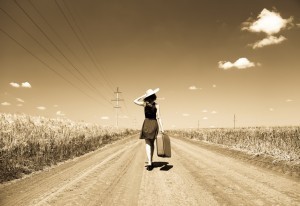 In both of my novels published to date, my heroines are very much women standing alone in the world. This is in part due to their fierce independence and determination to make their own way; but it is also because they lack parents on whom they rely.
In both of my novels published to date, my heroines are very much women standing alone in the world. This is in part due to their fierce independence and determination to make their own way; but it is also because they lack parents on whom they rely.
In Burning Embers, Coral’s parents divorced when she was a child. Her father returned to Africa; her mother remarried and had more children; and Coral was sent off to boarding school. By the time she has become a young woman, she has come to terms with her mother’s remarriage, but there is a distance between them: she would not turn to her mother for comfort or guidance. And at the start of the novel, Coral is on a ship bound for Mombasa to take up her father’s plantation, for he has died. She is so very lost, and so very alone, on that ship:
Coral was overcome by emotion, remembering the last time she had seen this landscape. She thought of her father, who today would not be waiting for her. How empty her childhood home would seem without him. A lump formed in her throat, and she bit her lower lip while fighting to control the tears quivering on the edge of her eyelashes. Unable to restrain them for long, they spilled over and down her cheeks.
In The Echoes of Love, Venetia is also a woman alone. Her mother has died, leaving her with a father with whom she does not see eye to eye; so much so that she flees England and makes a life for herself in Venice, Italy – away from him. Paolo, when he meets her, is somewhat horrified by her isolation:
Abruptly, his eyes darkened. ‘What is a pretty woman like you doing out on the town on her own, on a night like this? I can’t believe you have no fidanzato, Venetia. Is the man away? Do you have no father? No mother? No brother to care for you?’ His outburst was almost angry as he threw down his cigarette, crushing it vigorously beneath his heel.
In Paolo’s world, Venetia should be cared for, protected.Independent as she is, she rallies against this. But the truth is, she is very vulnerable and very alone.
Why do I isolate my heroines so? It’s terrible of me, n’est-ce pas? Ah, the cruelty of the author! The truth is, I need those heroines to be alone. Not in a militant Greta Garbo ‘I want to be alone’ sense; but in a way that is both their choosing and at once not. Coral and Venetia go to a new country alone to make a life there – that is their choice; their spirit and strength as women shining through. But in a sense, they are driven by their circumstances. Can Coral remain in England, hiding behind her mother’s skirt and clinging to her mother’s new family? No, she mustmake her own life; she mustgo to Africa and reconnect with the father who so recently died but whom she lost, in truth, long ago. Can Venetia remain in England, controlled and bullied by her autocratic father, building a life of which he and only he approves? No, she must stand strong and escape his iron rule.
Ultimately, both women must stand alone – and while they find friends and mother figures to support them, they must know their own hearts and take their own decisions. I suppose, in a sense, this mirrors the personal journey I took when I left home after my degree and went travelling. We must all fly the nest at some time, and find our own way in the world.
For me, it is essential that a romantic heroine finds that path before falling in love and committing to a man. Hence Coral is a successful freelance photographer who comes to Africa on her own to run her plantation before she meets and falls for Rafe. And Venetia is a prominent mosaic restoration expert who’s assimilated into a foreign culture and has her own beautiful home beforeshe meets and falls for Paolo. My heroines aren’t damsels in distress to be rescued. They are women who have proven they can stand alone – but who ultimately make the courageous, difficult, wonderful choice not to do so any longer.
July 25, 2014
The Joust of the Bear
I set a large part of my novel The Echoes of Love in Tuscany, Italy, because it’s a region I know well and love for its scenery and, especially, its culture. And what better typifies the spirit of the Tuscans than the Giostradell’Orso, the Joust of the Bear.
Today, thousands and locals and visitors will gather in the Piazza del Duomo of Pistoia (for which the pistol was named, as it was first made there), jostling to find a seat in the bleachers brought in. Once seated, they’ll look down on an oval track created for the joust whose contestants herald from different districts of Pistoia.
Jousting – in which two horsemen attempt to de-seat each other using long lances – originated in the Middle Ages, and was most popular in England, where it became synonymous with medieval romanticism. But Italy had its share of tournaments too, dating back to 1200 when knights would joust to win the palio (a cloth banner).
In Pistoia, the Giostradell’Orso takes place each year on the evening of 25 July to mark the festival of St James, patron saint of the city (the bear is the heraldic symbol of the city). Preceding the joust, in the day, are a Mass at the cathedral and a historical procession. At around eight o’clock the jousters ride through the city, cheered on by spectators, and in the Piazza del Duomo the bishop of the city blesses them before the event commences.
Three knights from each of the four districts compete, each with its own colours and coat of arms:
Porta Lucchese: a deer; white and green
Porta Carratica: a dragon; red and green
Porta San Marco: alion; red and yellow
Porta al Borgo:agriffin;red and white
The knights go out in pairs to lance a bear-shaped target; he who hits the target first gets three points; the other knight gets one point if he also hits it. Eighteen rounds later, the scores are tallied and the winner announced and declared the Knight of the Golden Spur. The winning district takes home the palio.
If you’re able to attend the joust, I highly recommend it as a thrilling night out (and at least no bears are harmed for this sport!). But if Tuscany’s a dream away and you fancy an escape into the medieval pastime of jousting, how about renting the 2001 movie A Knight’s Tale? Brilliant jousting sequences, and plenty of interest for the romantically inclined thanks to Heath Ledger…
July 23, 2014
Books as visual art – and seats!
In my novel The Echoes of Love the hero, Paolo, explains: ‘I spend a lot of time reading about beautiful things and like to surround myself with them.’Were I describing myself, I would edit this to: ‘I spend a lot of time reading beautiful things and like to surround myself with them.’The ‘beautiful things’ in question are, of course, books. I love books – the look of them, the smell of them, the feel of them; they make a room; they bring meaning to a space. For me, a shelf of books in a room is all I need. But I find it fascinating that there are those who go a step further; who would say: ‘I spend a lot of time reading beautiful things and like to make them into art and surround myself with that art.’
Artist Mike Stilkey has recently hit the news for his innovative paintings laid down not on the traditional canvas but instead on piled-up books. Through reclaiming old, unloved books discarded by libraries, he makes them beautiful and admired once more.
It’s a growing trend. I love this work by Ekaterina Panikanovaby:
And the many carved book landscapes by Guy Laramée:
And I adore this sculpture built from plant and animal illustrations cut out of old textbooks by artist Andrea Mastrovito:
For me, a book on the shelf is art enough. But I love how artists are taking the medium further, and especially how their treatment of old books signifies that they are things of beauty to be treasured and retained.
And it’s not only art in galleries that’s gone bookish. This month, you may be wandering down a road in a city, foot weary, and decide to sit on a bench for a breather. But wait… is this a bench? It’s a little, well, book-like?
Welcome to London, home of ‘Books about Town’ – a public art project developed by the National Literacy Trust. Fifty books have been embodied in public benches by artists in brilliantly innovative ways.
Here’s a Bridget Jones-inspired bench:
And here’s a Peter Pan one:
To see all the benches, and get maps to help you find them in London, visit www.booksabouttown.org.uk.
The motto of the day, it seems, worldwide is a hearty: Vive le livre!
July 20, 2014
Book review: The Unpredictable Consequences of Love by Jill Mansell
From the blurb:
In the idyllic seaside town of St Carys, Sophie is putting the past firmly behind her. When Josh arrives in St Carys to run the family hotel, he can’t understand why Sophie has zero interest in letting any man into her life. He also can’t understand how he’s been duped into employing Sophie’s impulsive friend Tula, whose crush on him is decidedly unrequited. St Carys has more than its fair share of characters, including the charming but utterly feckless surfer Riley Bryant, who has a massive crush on Tula. Riley’s aunt is superstar author Marguerite Marshall. And Marguerite has designs on Josh’s grandfather…who in turn still adores his glamorous ex-wife, Dot…Just how many secrets can one seaside town keep?
Quite simply perfection in the women’s romantic fiction genre!
By turns funny and moving, this is a story to warm any heart and leave you smiling (while also a little sad to bid the characters farewell).
I love the way Jill Mansell puts people at the heart of her stories: the setting is appealing, and the plot kept me turning the pages, but it’s the characters that really jump out: likeable, believable, colourful, fun.
Romance abounds in the book with the sizeable cast of characters, but rather than dilute the feel-good factor, this ramps it up. I love the juxtaposition of the different storylines and the complexity of the interweaving, reminiscent of a TV mini-drama. I found myself rooting for each pair, and I was delighted by the outcome of each love story – just the ending you expect, and want, to find in a book of this genre.
A real strength of the author’s writing is her ability to juggle poignancy and light-hearted fun expertly. I laughed out loud several times while reading, especially at the author’s frequently funny phrasing, and I was also moved by ‘deeper’ parts of the book, especially the narration of the incident in Sophie’s past that caused her to swear off relationships for good – my heart was in my throat as I read.
How can I sum up? This book is, I think, the equivalent of sharing a cup of fragrant coffee and a plate of delectable pastries with a best friend – the ideal read for a pick-me-up. It’s a ‘keeper’ as they say; one to return to safe in the knowledge you’ll thoroughly enjoy your reading time.
The Unpredictable Consequences of Loveis available now from Amazon; click on the book cover below to visit the store.
July 18, 2014
The Festival of the Redeemer
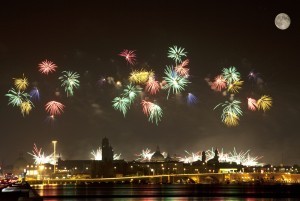 Venice comes alive this weekend for the FestadelRedentore – the Festival of the Redeemer. It takes places on the third weekend of July, and has done each year since 1577. Then, the city was celebrating its deliverance from devastating plague that decimated the population of Venice in the preceding two years, killing 46,000 people.
Venice comes alive this weekend for the FestadelRedentore – the Festival of the Redeemer. It takes places on the third weekend of July, and has done each year since 1577. Then, the city was celebrating its deliverance from devastating plague that decimated the population of Venice in the preceding two years, killing 46,000 people.
The focus of the festival is Il Redentore, the Roman Catholic church built by Palladio on the island of Giudeccain the CanaledellaGiudecca. Venice’s most beloved architect was recruited to design this votive church as a long-standing testament to God’s mercy in delivering the Venetians from the plague. It was consecrated in 1592, and for more than three centuries a Mass has been held there during the FestadelRedentore. The Mass is attended by all major officials and any who would give thanks. Pilgrims reach the church in a procession over a 330-metre pontoon bridge built for the festival. The service is deep with tradition and as moving today as I’m sure it was in the 16th century.
Aside from the serious business of thanking God for saving the city, there’s a whole lot of celebrating to be done for the Venetians! The festival is best known for two key events:
Fireworks: The waterway is lit up, and late evening a spectacular display erupts in the bay of St Marks, lighting up the skyline – and it goes on, and on, and on, for up to an hour! Giudecca Island and Riva degliSchiavoni near St Mark’sSquare offer the best views on land; but on the water you’ll see most Venetians gathering in boats from dusk, their boats decorated with flowers and balloons. The city is alive all night, and boats carrying revellersweave through the canals, before gathering at the Lido to see the sunrise.
Regattas: People line the canals to watch regattas on the Sunday. In contrast to the solemn religious procession, the regattas bring a joyful air to the city; you can’t fail but be swept up in the spirit of the event. Root for children rowing down the waterways, or admire the procession of quintessentially Venetian gondolas. But don’t for a moment think the regattas are mere frivolity; Venetians take the races very seriously indeed!
Here’s a preview of this year’s event:
If you’re interested in attending the event, the itinerary is as follows:
Saturday, July 19
7:00p.m. Opening of the pontoon bridge connecting the Zattere to the Church of the Redentore on the island of Giudecca.
11:30p.m. Fireworks in St. Mark’s Bay.
Sunday, July 20
4:00p.m. Young people’s pupparini regatta, Giudecca channel.
4:45p.m. Puppariniregatta, Giudecca channel.
5:30p.m.Gondola regatta, Giudecca channel.
7:00 p.m. Mass at the Church of the Redentore.
If you’re in Venice today, don’t miss the free concert at the Church of the Redentore at 8 p.m. by Ensemble MusicaVenezia. It’s to commemorate the 100th anniversary of the First World War, and will include music by Monteverdi, Vivaldi and Handel.

